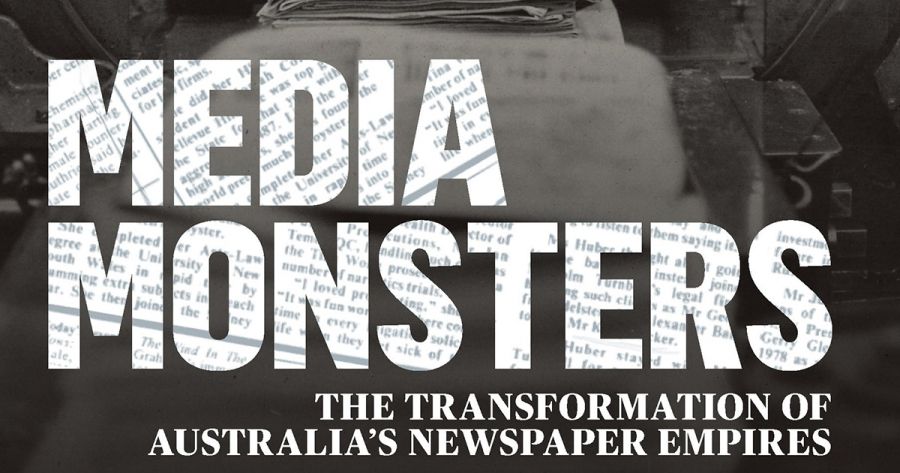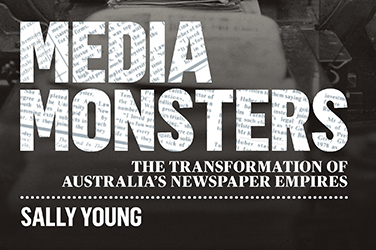
- Free Article: No
- Contents Category: Media
- Review Article: Yes
- Article Title: ‘Nasty, brutish, and banal’
- Article Subtitle: The ploys of media moguls and politicians
- Online Only: No
- Custom Highlight Text:
In 1968, Rupert Murdoch was one step from acquiring his first international media holding, in the British tabloid The News of the World. That Murdoch was so close was a personal coup, given that his press ownership had begun sixteen years earlier with a much-diminished inheritance, largely based in Adelaide. To pull off the News of the World acquisition, however, Murdoch needed government approval to transfer $10 million Australian offshore. Speed, secrecy, and surety were pivotal, and in search of all three Murdoch went to John McEwen, the deputy prime minister and leader of the Country Party. The two had an enduring bond: McEwen had helped Murdoch buy his grazing station and family bolthole, Cavan, and when McEwen was appointed acting prime minister after the death of Harold Holt in 1967, Murdoch had argued in The Australian that McEwen should be prime minister in his own right. Now, in 1968, McEwen took Murdoch to the prime minister, John Gorton, who was also familiar with the young press baron. Gorton had briefly been lined up to work for Murdoch’s father in the 1930s and owed something of his present job now to the influence Murdoch had wielded when it became clear that McEwen could not remain prime minister.
- Featured Image (400px * 250px):

- Alt Tag (Featured Image): Patrick Mullins reviews 'Media Monsters: The transformation of Australia’s newspaper empires' by Sally Young
- Book 1 Title: Media Monsters
- Book 1 Subtitle: The transformation of Australia’s newspaper empires
- Book 1 Biblio: UNSW Press, $49.99 pb, 576 pp
- Book 1 Cover Small (400 x 600):

- Book 1 Cover (800 x 1200):

All the ingredients figuring in this small moment – press barons, politicians, an urgent acquisition, rivalries real and proxied, seamy deals and understandings – loom large in Media Monsters, Sally Young’s account of Australian corporate media history in the middle of the twentieth century. The sequel to Young’s lauded Paper Emperors (2019), this book focuses on how the newspaper companies of her earlier volume transformed themselves into multi-media behemoths in 1941–72. The title, drawn from a phrase by journalist and media executive Colin Bednall, refers to the sprawling empires that resulted from an unprecedented period of change in the media industry, where the ‘monsters’ feasted on smaller competitors, staked out new territories, and took up new technologies. Yet the title performs a double duty of also describing the people leading those empires. The reptilian sense of contest and conquest, the paranoia and predilection for power and politicking, make these men – and they are all men – fearsome and compelling figures, even when the more cartoonishly thuggish ones (e.g. Packer) are set aside.
Rupert ‘Rags’ Henderson, for example, was a long-serving steward of the Fairfax family and The Sydney Morning Herald, yet he was also so frightening that journalists were rendered like the granddaughters who shook in their boots to meet him. Dubbed on his retirement the ‘Black Prince’, Henderson simultaneously nurtured the Fairfax empire and built his own in its shadow, with acquisitions – made always in a ‘personal capacity’ – of a litany of television stations and regional newspapers. The intent was to skirt rules that limited media holdings; the result was a sprawling corporation structured with interlocking entities that owned one another in fragments. The information Young compiles to depict this is a circuit board of controlled connections: John Fairfax Limited owned the Fairfax Corporation Pty Ltd, which owned Fairfax Publications Pty Ltd, which in turn owned a one-third share of Queensland Television Holdings Pty Ltd, which was also part-owned by Amalgamated Television Services Pty Ltd, which was – ta-dah! – seventy-one per cent owned by the Fairfax Corporation Pty Ltd.
The proliferation of these structures was an answer to the rules introduced in the 1950s as Australia’s government and media barons reckoned with the arrival of television. Young recounts that reckoning with a wealth of unseemly detail and hardnosed insight. The press barons worked tirelessly to tip Labor from office in 1949, in part from fear that a re-elected Chifley government would establish a public broadcasting system in the mould of Britain’s, where the BBC reigned supreme. In the 1950s, they took obsequiousness to new lows by giving Prime Minister Robert Menzies free airtime on their radio stations, at peak listening periods, and pointedly denied the same airtime to Labor’s leader, Doc Evatt. In turn, the Menzies government appointed a royal commission into television that it stacked and then pre-empted by instituting a dual system of public and commercial broadcasting. Amid a self-interested campaign to accelerate the arrival of commercial television – ‘It’s time they gave us TV,’ ran a Daily Mirror headline – the press companies forged alliances to crowd out competitors and ensure they were the only viable candidates for the few commercial licences on offer. Undertakings freely given by the press barons about control and ownership were then rescinded, abandoned, or adhered to only in a black-letter law meaning. ‘There is no attempt to create an empire or anything like that,’ Murdoch said, during public hearings for the first licence in Western Australia, in 1958. ‘It would not interest me.’ Fine promises of what the press barons would do with those licences, too, were inevitably cast aside. Lectures by famous educationalists, demonstrations by leading scientists, programs that would be ‘wholesome, good, entertaining’, writes Young, were within a decade scarce on Australian commercial airwaves. What was plentiful was content that The Times of London called ‘nasty, brutish, and banal’.
Young depicts this unedifying process with clarity; her history demystifies and enlivens the tactical urgencies and strategic audacities that Australian media companies contended with and displayed at this time. She weaves around the more prosaic decisions – of premises, industrial relations, and capital-heavy investment in new printing plants and computers – their responses to broader social and economic changes, pointing sometimes to structural factors and at other times to personal influences. She lays bare the reasons for the demise of the 111-year-old Argus newspaper in 1954, for example, pointing to the poor decisions made by its owners, the British-based Daily Mirror group, and she explores the resurgence of The Age under editor Graham Perkin in the 1960s. Some pages of Media Monsters fossick well-excavated ground, but Young finds new bones. Her deep archival research, particularly through the Fairfax business records, suggests that Murdoch’s ultimate entry to the Sydney newspaper market in 1960 came about thanks to Rupert Henderson’s desire to help the young Murdoch on his way – a desire made benevolent by his belief that Murdoch, having purchased the failing Daily Mirror newspaper, would pose no competition to Fairfax and The Sydney Morning Herald. This, of course, was profoundly mistaken: the Packers, who received a gloating phone call from Murdoch immediately after the deal was sealed, knew just how competitive he would be.
What is sometimes heavy-going corporate arcana is also enlivened by an unexpected humour attained through tart juxtapositions. The first Gallup poll in 1941 registered fifty-nine per cent support for equal pay for men and women, Young points out, and was reported on the same page as advertisements for stockings, lipstick, and curtain sets. The first two advertisements broadcast on new television channel GTV-9, in 1956, were for cigarettes and an analgesic linked to kidney damage and cancer: two products, Young notes dryly, that kill their consumers.
When Media Monsters opens, in 1941, the power of newspaper owners was at its peak: more than a million newspapers were delivered to homes in the morning, and a million more were sold after lunch at kiosks, street corners, train stations, and racetracks. By the end of the book, the decline of the newspaper business seems offset by the tremendous power wielded by many of the same owners through television. And yet, as Young closes, a very different future was ahead of them, and another transformation – perhaps for a sequel volume – awaits.
Young’s diligent and voluminous study sheds new light on the media companies still with us and reiterates with fresh force well-known conclusions. Among the most important is the role played by politicians in creating the massive media companies still with us. Wary of press power but hopeful of seeing it deployed in their favour, they unshackled the snarling monsters to rampage across the body politic. As John Gorton said, recalling how he had swung Cabinet in favour of Murdoch’s 1968 request, ‘I always liked Murdoch, and I started him on his way.’


Comments powered by CComment